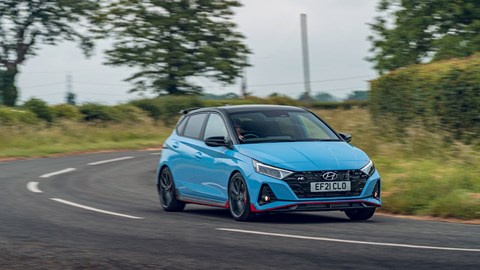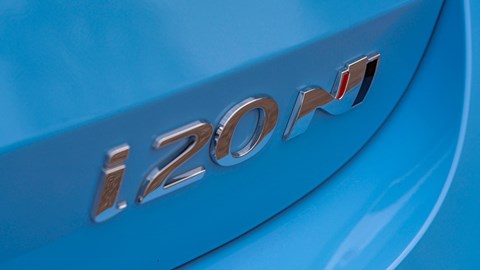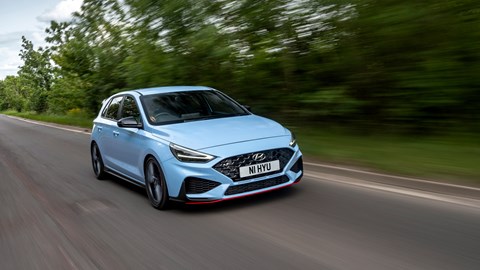► Hyundai’s VP teases plan for new hot hatches
► Shock, horror – they won’t be powered by electricity
► And, he says they’re going to be affordable
Being a petrolhead in 2025 is tough. Our hobby is steadily being legislated against thanks to tougher CO2 targets, increasingly stringent noise regulations and expanding low-emission zones. The amount of red tape required to get a fast combustion car into showrooms is either putting manufacturers off building one or sterilising the finished product.
But Hyundai doesn’t seem fazed. I recently spoke to the N division’s irrepressibly petrolheaded visionary, Joon Park, at the launch of the Ioniq 6 N – and he told me his engineers are working on a hybrid-powered replacement for the i20 and i30 N.
‘We are not limiting ourselves into EV,’ he said. ‘But this is some kind of tendency after we launched Ioniq 5 N, because Ioniq 5 N was a huge message for the entire car industry. And a lot of people thought and think that Hyundai N is going towards only for EV. It’s not true.

‘The discontinuation of i20 and i30 N was a disaster for me. But it takes time to it takes time to have a new one. So yeah, we are not focusing on EV only. We are not. I’m not the person who actually really likes the EV. I’ve always liked the smell and the sound and all those kinds of race cars.’
Joon explained Hyundai N’s shift back into petrol power won’t be easy, though. The brand can’t make as much money on a small, fast petrol car as it can on a larger, more expensive electric car. The markup just isn’t as strong. But he couldn’t give a flying proverbial.
‘Hyundai N has to be reachable,’ he said. ‘We actually want to play with our friend groups, with a proper priced car and reachable price cars. We are not talking about luxury exotic car. We are talking about the Hyundai N level. In that case, where should we go? Where nobody else is existing anymore, except for GTI.

‘Last movers advantage could exist, right? But it could be a first mover to invest a lot of for those smaller cars which do not make that much amount of profit margin.
‘Higher price, higher profit margin, right? Small car, lower price, lower profit margin. So, if we want to have a B-segment car then I need to work very hard to persuade everybody. So, this is what I’m doing. B or C, or it doesn’t matter. But at the same point, I also need to take care of our customers who really wants to be in this area.’
What engine will power these new hot hatches?
Joon kept that card close to his chest. However, he did confirm that he won’t be able to revive the old i30 N’s 2.0-litre petrol engine. It’s dead.
‘I’m responsible for the global market. Europe is not going to be easy,’ he said. ‘All those kinds of things that we actually – you know, the 2.0 turbo engine for 280 PS, or something like. That cannot exist anymore based on the current regulation and future regulation.’

However, Hyundai’s 1.6-litre Smartstream engine could provide a lifeline. This engine is already used in the self-charging hybrid versions of the Kona and Santa Fe – and a high-output, non-electrically assisted variant of it is found under the bonnet of the i20 N.
Hyundai could feasibly take the i20 N’s 201bhp engine, wind a bit more boost into it and then bolt on a beefy hybrid system to crank its combined output up to a level that can keep pace with the Golf GTI and Golf R.
I reckon upwards of 300bhp should be manageable. The Santa Fe’s self-charging hybrid tech adds 53bhp to that 1.6-litre engine, while the PHEV system adds 91bhp. And I’m sure Hyundai’s engines can find the missing ponies from the engine to make up the shortfall.